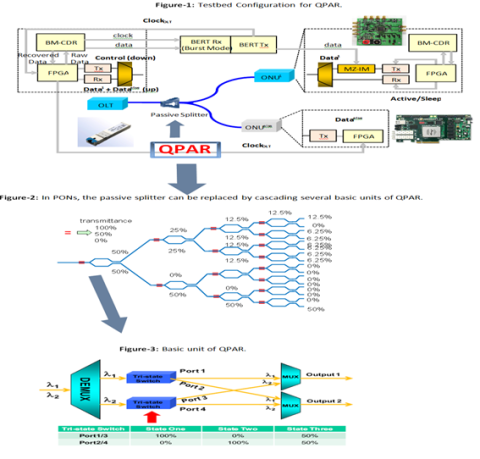Recent developments in optical and wireless networks bring the prospects of higher bandwidth, ubiquitous access and a wide range of new applications to millions of users. The design of next generation networks should also address principles of flexibility, scalability, cost-effectiveness, and environment-friendliness. Toward this important goal, this project investigates the potential and the applications of novel devices and systems based on latchable Micro and Nano/Electro-Mechanical Systems (N/MEMS) technology, non-volatile ion-migration systems, and their integration in standard electronics through silicon photonics in addition to uncooled Dense Wavelength Division Multiplexing (DWDM) in plane circuits. All these devices are aimed to enable greater intelligence and flexibility in the networking tasks for future services. This collaboration will also impact a wide range of architectural concepts, from interconnects to access networks. The key aspect is that QPAR seeks extremely energy efficient approaches in order to radically change the concepts of power usage in networks. This project is the result of a cooperation between two leading Universities and the Principal Investigators (PI) have substantial, and complementary, experience in designing state-of-the-art photonic devices and in developing next-generation networks.
The outcome of QPAR will cause significant industry repercussion as it will bring together intelligence and energy efficiency into future networks and is expected to present broader impacts toward the environment and the economy in several important areas. The project directly contributes to the development of the important areas of high-speed communications, computer and datacenter interconnection, and broadband access networks. Those segments represent an important part of the U.S. economic, strategic, and technological edge.
